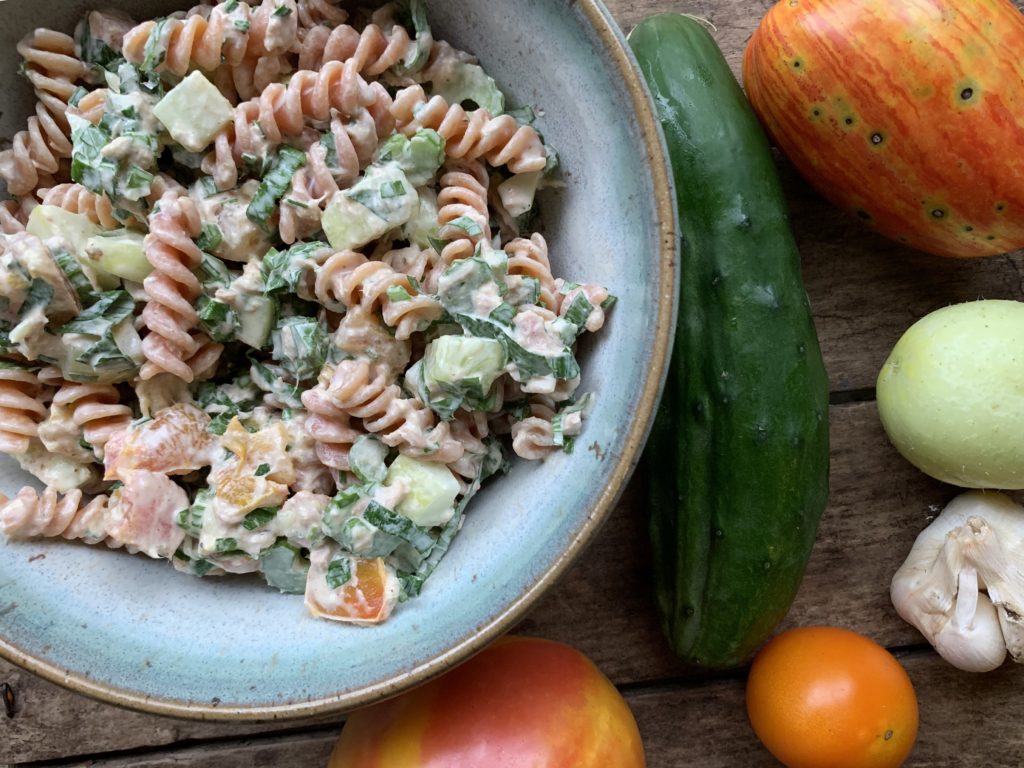 Mid to late July marks the beginning of the prized fruits and vegetables of summer. Leafy greens are coming to a close while varieties of bulging and speckled heirloom tomatoes, cucumbers in every shade of green, and melons with flesh ranging from blood red to creamsicle orange come pouring out of gardens everywhere. Farmers and gardeners spend the late months of spring anxiously anticipating these delightful treasures, but then lament over the abundance and inability to keep up with the seemingly endless supply.
Mid to late July marks the beginning of the prized fruits and vegetables of summer. Leafy greens are coming to a close while varieties of bulging and speckled heirloom tomatoes, cucumbers in every shade of green, and melons with flesh ranging from blood red to creamsicle orange come pouring out of gardens everywhere. Farmers and gardeners spend the late months of spring anxiously anticipating these delightful treasures, but then lament over the abundance and inability to keep up with the seemingly endless supply.
Fear not, my fellow gardeners, farmers market enthusiasts, and CSA members for there are a variety of ways to use up or store these bountiful harvests. I’m always sure to make a few batches of my Cold Pack Dill Pickles (recipe can be found in my cookbook) to store for times when fresh cucumbers are a thing that are spoken of longingly. My excess tomatoes are simply diced and frozen raw to be added to soups over the winter. I’ll also be making a few batches of jarred salsa this year since I have some gorgeous purple tomatillos that are just begging to be roasted and canned along with these other fresh garden ingredients.
I also find myself preparing a variety of salads made from tomatoes, cucumbers, peppers, and celery (yes, I have an overabundance of celery, too), which all lend themselves well to salads such as those made from potatoes or pasta. This particular salad is made from a delicious grain-free pasta made from just one ingredient – organic red lentil flour. The brand is Tolerant, and it’s my top choice for lentil pasta since it’s also certified organic. Crops such as lentils and other legumes and grains are often sprayed with glyphosate a few days before harvest in order to improve yield. I therefore try to buy these foods as certified organic in order to avoid exposure.
For canned tuna, be sure to read the label and select brands that are pole caught and fished sustainably such as Wild Planet and Safe Catch. Fishing practices vary widely in their environmental impact and can have devastating effects on fish populations through bycatch. One such fishing method, trawling, casts large nets that collect a plethora of fish species and other ocean life, even whales. So while these fishermen are harvesting tuna (just as an example), up to 95% of their catch is useless and simply thrown back after it has already died. These unsustainable practices should therefore not be supported.
Be sure to let me know if you prepare the following recipe and whether you have any mind blowingly delicious garden substitutes! Enjoy!


- 8 oz box lentil pasta (see text above for brand suggestions)
- 4 cups water, for boiling pasta
- 1 large tomato, diced
- 1 medium cucumber, diced
- 4 stalks celery, diced
- 1 clove garlic, minced
- 1/4 cup chopped chives
- 1/4 cup mayonnaise
- 2 tablespoons brown mustard
- 1/2 lemon, juiced
- salt and pepper, to taste
- Boil the water and add the pasta once boiling. Stir in the pasta, being sure to keep an eye on it since lentil pasta can make the water especially frothy and it can easily boil over. Cook the pasta as indicated on the package or until soft, about 7 minutes.
- Prepare the vegetables while the pasta cooks. Place all of the vegetables, garlic, chives, mayonnaise, mustard, lemon juice, salt, and pepper into a medium sized mixing bowl. Break apart the canned tuna and add that to the bowl, as well. Mix well while waiting for the pasta to finish cooking.
- Strain the pasta through a colander and run cold water over the top of the pasta for about 30 seconds or until completely cooled. Remove as much water as possible, add the pasta to the other salad ingredients, and stir until everything is evenly coated.
- Serve immediately or store in the refrigerator for up to three days.
- Be sure to read the text of the post for tuna recommendations.
Hi. We do not use mayonnaise, we been doing the pasta,tuna and veggies since I was a child. We use homemade vinaigrette or plain lime juice with salt and pepper